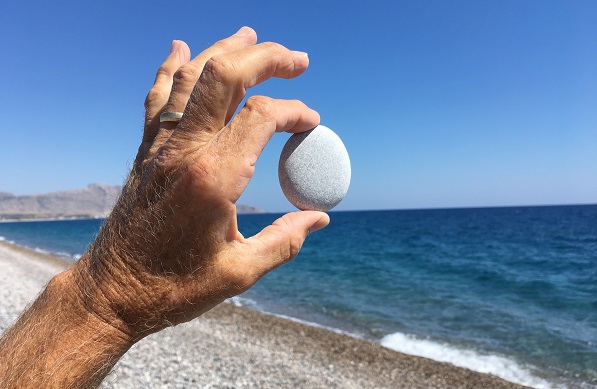
Join my paleontologist/geologist husband Thor Hansen as he talks about our fascination with marble pebbles we collect on Greek beaches.
NOTE: I’m busy this holiday week as it’s my featured week to create daily posts for The International Pulpwood Queens Book Club, since my novel PAUSE is a December selection of the club. Check it out on Facebook @THE OFFICIAL International Pulpwood Queen and Timber Guy Book Club. Take it away, Thor:
Today we talk about marble. Marble is beautiful, relatively easy to carve, and takes a nice shine, so it is no wonder marble is prized for sculpture and the interiors of buildings (not so good for outdoor projects because it dissolves in acid rain). Marble is metamorphosed limestone, i.e. limestone that has been buried and heated and squeezed by geological processes. Most of the rocks you see every day are silicates, meaning they are composed of silicon, oxygen, and probably several other elements like iron, magnesium, and aluminum. Silicates comprise the vast majority of rocks on Earth and are formed deep underground under high temperatures and pressures. Limestone, on the other hand, is organic. Marine organisms like corals, clams, snails, and algae extract calcium carbonate from tropical sea water to make their shells/skeletons. A coral reef system typically has a strong coral/algal reef that protects a quiet water lagoon. On the reef and in the lagoon the busy little carbonate secretors make their shells, which turn into lime mud after they die.
In the image below Sara is snorkeling around a patch reef near Xcalak, Mexico. On the right you can see corals, sponges, sea fans, and coralline algae. The white stuff on the seafloor is lime mud formed by the degraded reef organisms.
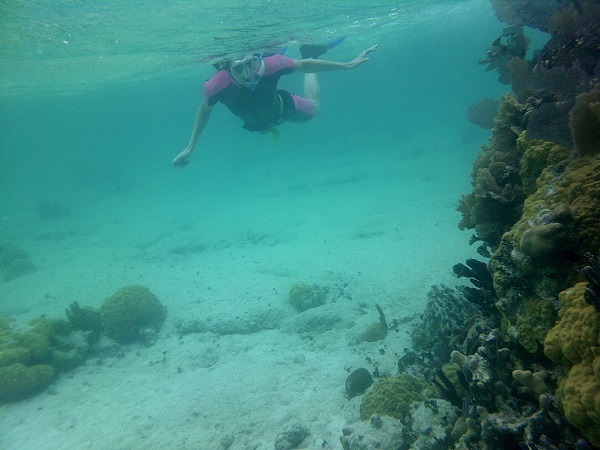
When you go to a place like the Yucatan Peninsula (think Cancun, Tulum, Playa Del Carmen), everything you see or walk on was created by reef organisms. Below is the beach at Playa Sonrisa near Xcalak.
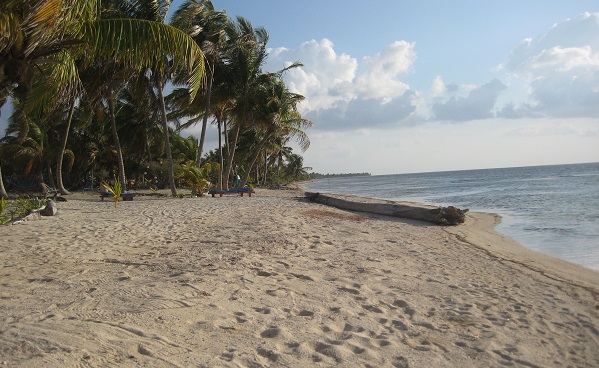
And below is a close-up of the beach sand. It is made up entirely of the shells of marine organisms.
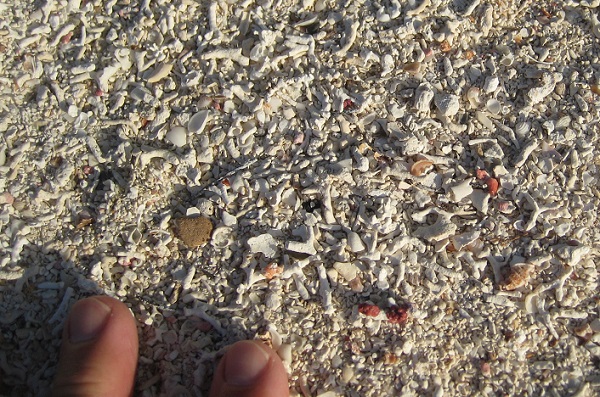
When the lime mud gets deeply buried and metamorphosed, it turns into marble. Greece has LOTS of marble. Many of the Greek islands beaches are paved with marble pebbles like below.
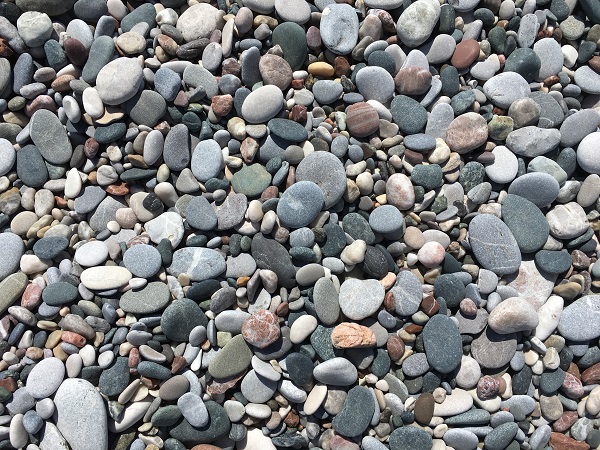
I love their smooth, symmetrical shapes and can’t stop collecting them.
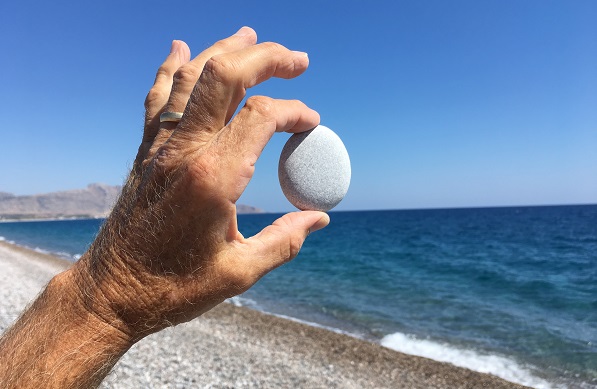
Sara, on the other hand, prefers the Greek Hot Rock Treatment.
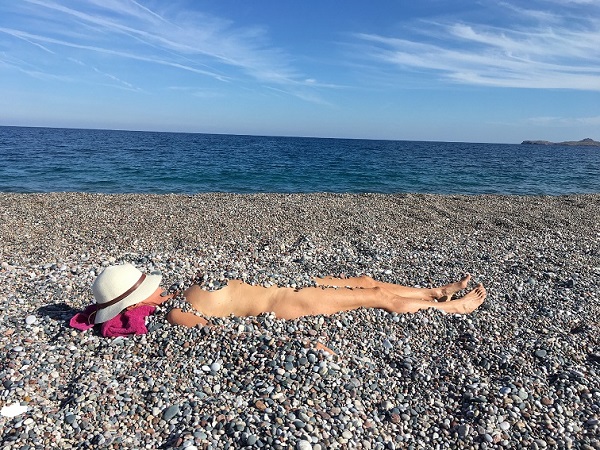
These marble pebbles polish up nicely. Below is a pebble we polished that was only lightly metamorphosed, and you can still see the fossilized remains of organisms.
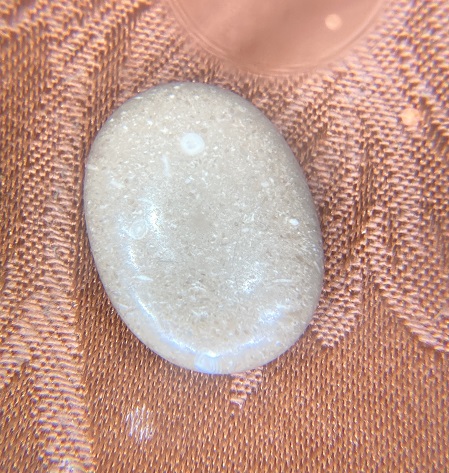
The white ringed object below is a nummulite: a single-celled marine organism that secretes a shell. They are quite common in some limestones. The pyramids of Giza are composed of nummulitic limestone.
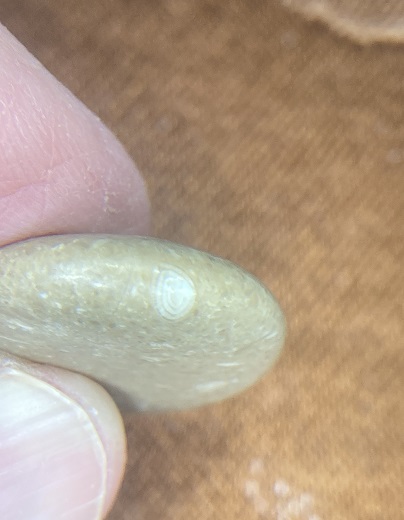
Below are some other pebbles that were more heavily metamorphosed, thus obliterating the fossils within them, but producing beautiful patterns and colors.
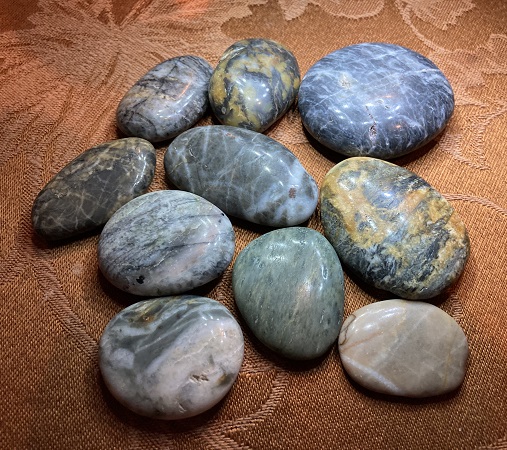
Sara and I spend a lot of time admiring and stroking our polished pebbles. It is a little bit kinky.
*****
You will find The Rambling Writer’s blog posts here every Saturday. Sara’s latest novel from Book View Café is Pause, a First Place winner of the Chanticleer Somerset Award and an International Pulpwood Queens Book Club selection. “A must-read novel about friendship, love, and killer hot flashes.” (Mindy Klasky). Sign up for her quarterly email newsletter at www.sarastamey.com

